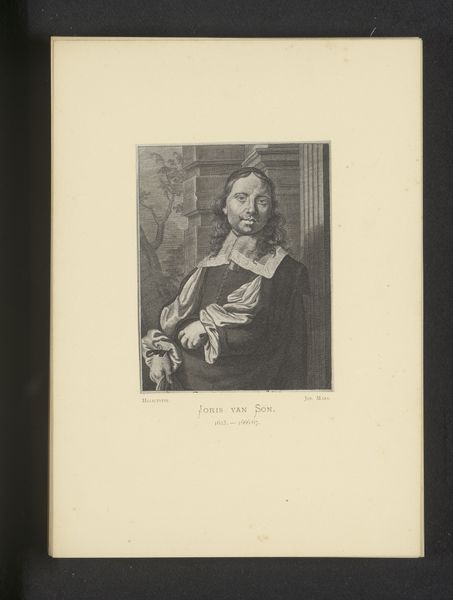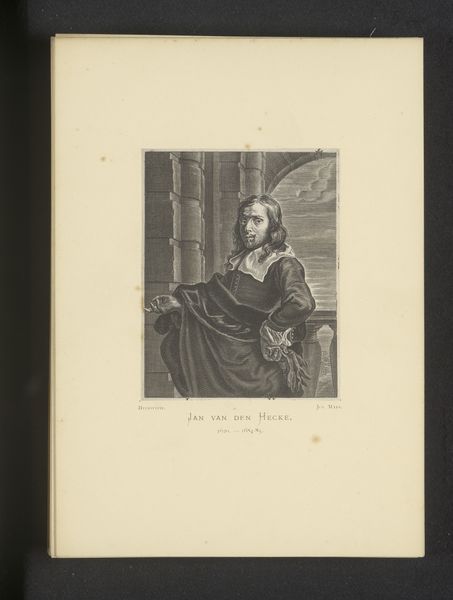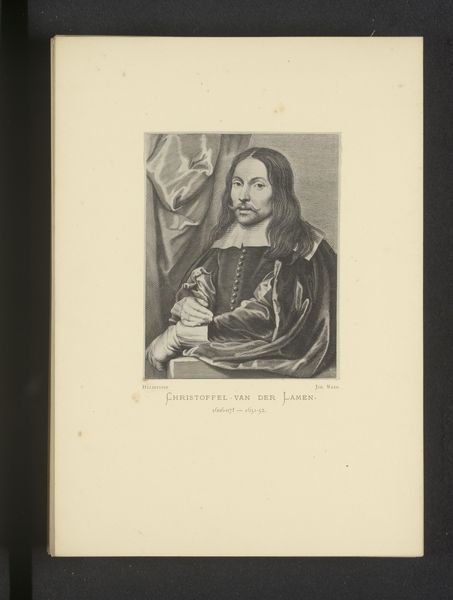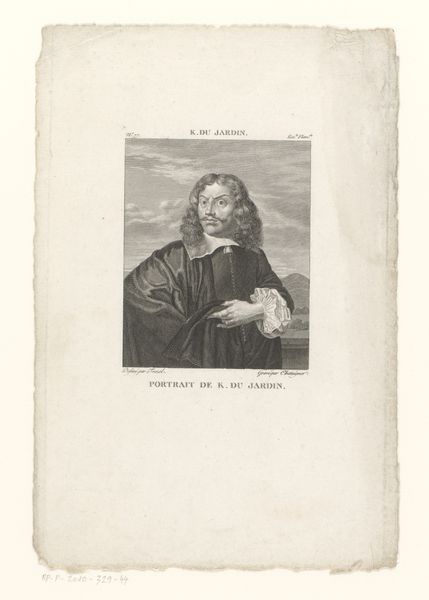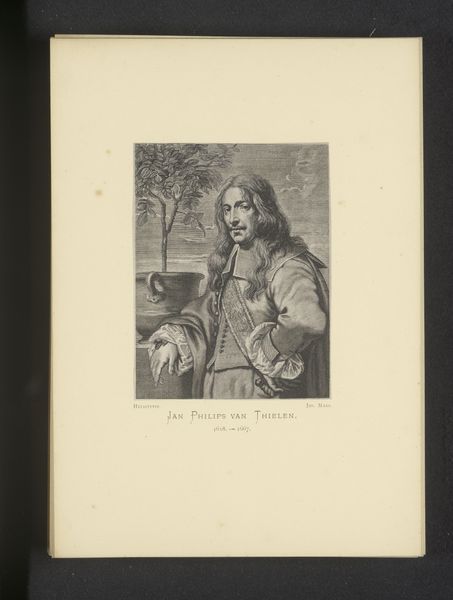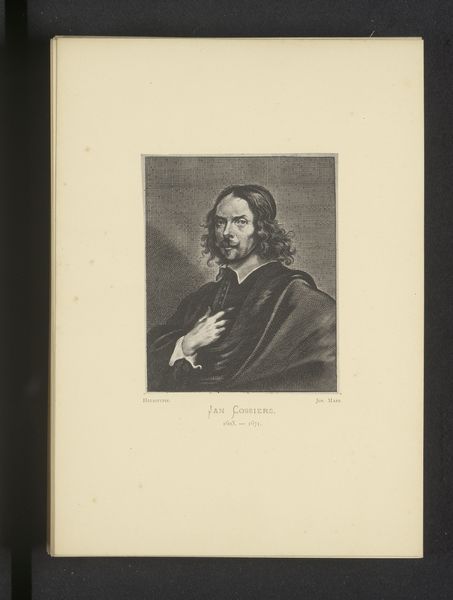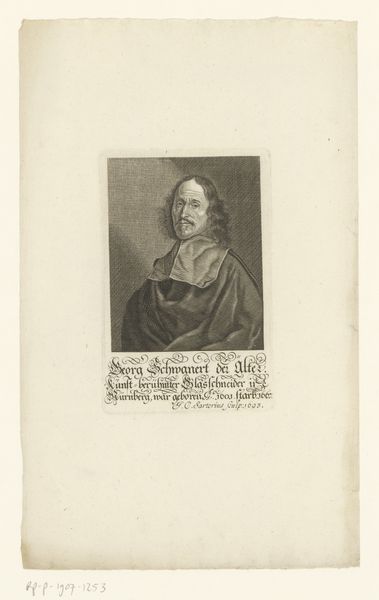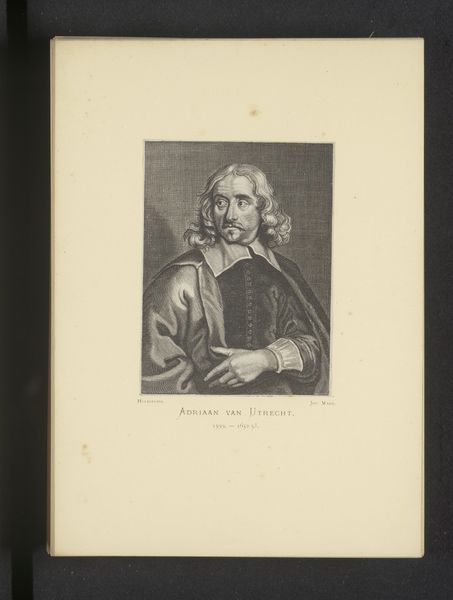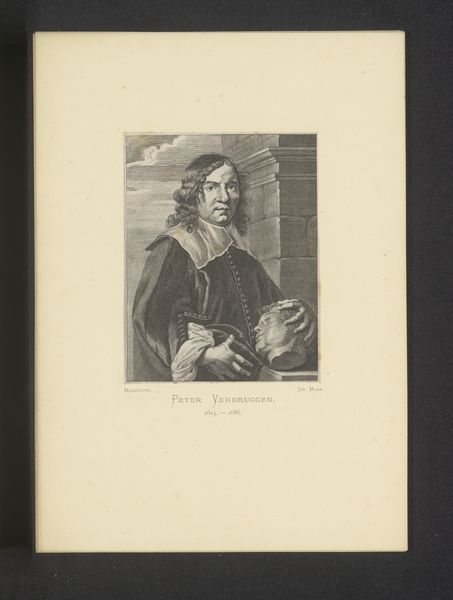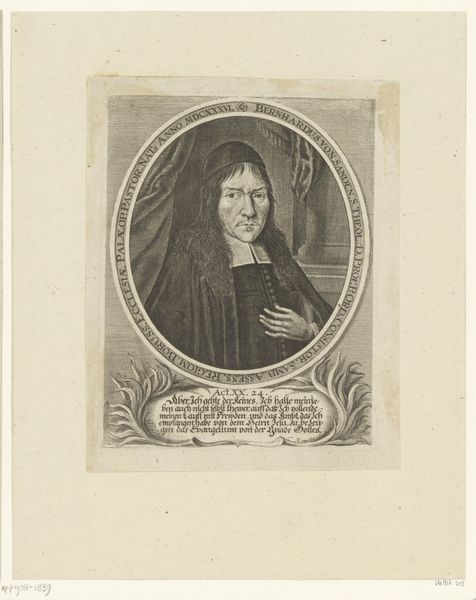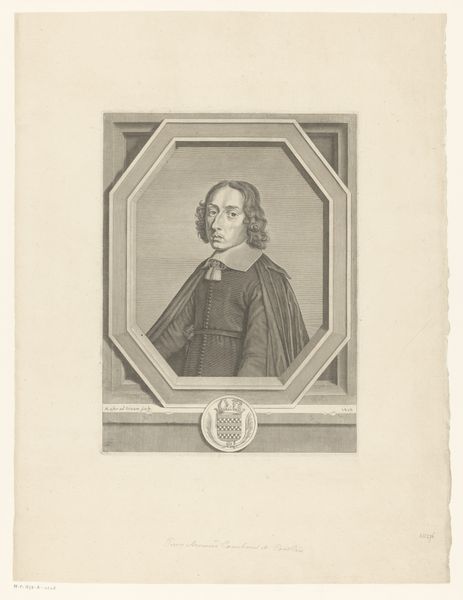
Reproductie van een gravure van een portret van Jan van Kessel door Alexander Voet (II) before 1877
0:00
0:00
Dimensions: height 119 mm, width 89 mm
Copyright: Rijks Museum: Open Domain
Curator: Before us is an engraving, "Reproductie van een gravure van een portret van Jan van Kessel door Alexander Voet (II)," created before 1877. It's a reproduction of a portrait of Jan van Kessel. Editor: It feels restrained, despite the flowing robe and landscape in the background. Very controlled, you know, given the process of engraving and printing to mass distribution. What was that like? Curator: As a print, it offers the symbolism of power and status to a wider audience. Note how Jan van Kessel is presented – he holds a flower, a mark of his refinement, while the print medium itself signifies a democratisation of representation in its period. Editor: Interesting. So, the printmaking itself is part of the message – how widely accessible that image becomes in households is crucial. I’m curious, too, about the division of labor – the engraver after the artist; this process transforms the creative economy as it was understood. Curator: Precisely. The symbolic act of duplication changes our relationship to the sitter and portrait itself. Does widespread access dilute the sitter’s personal aura, or enhance it through recognisability and memorability? Editor: I see your point about dilution. It also raises questions of skill and technique being subsumed in these distribution methods, becoming lost to authorship. Is it only the named painter or the engraver? Who truly ‘owns’ the artwork after this reproducible process? Curator: This challenges us to consider not just the symbolism of the sitter but the symbolism inherent in the distribution process. Who, indeed, benefits, and what power structures does it uphold or undermine? Editor: The focus shifts then to these processes that alter its value. Suddenly the act of art shifts from simply beholding the man represented to understanding the making of art into something accessible but still possessing status. Curator: Agreed. The portrait transcends being a mere depiction of Jan van Kessel; it evolves into a statement about artistic distribution. Editor: And about power: who makes, who is seen, and ultimately, who benefits. Food for thought, indeed.
Comments
No comments
Be the first to comment and join the conversation on the ultimate creative platform.
